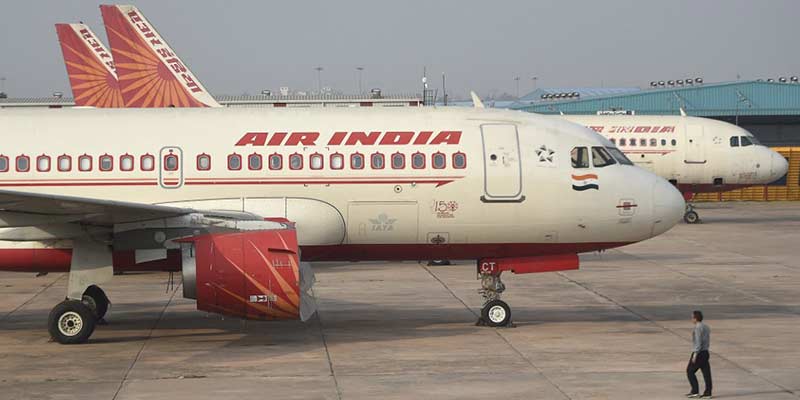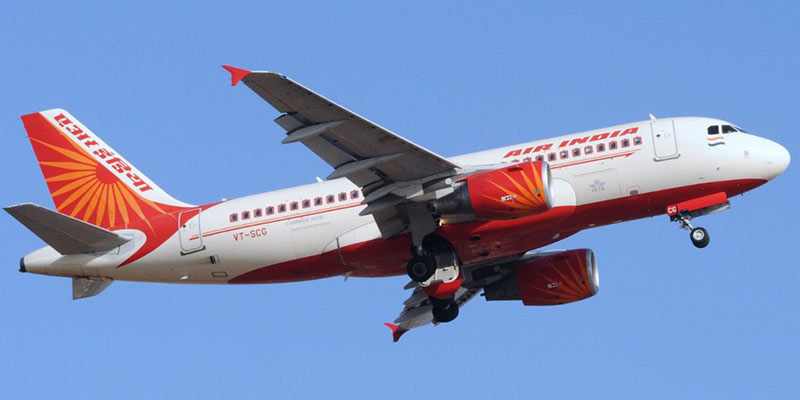- India
- Oct 09
Tata Group acquires 100% stake in Air India
• Tata Sons will retake Air India as the government accepted its winning bid of Rs 18,000 crore to acquire 100 per cent of the debt-laden state-run carrier.
• Tatas beat the Rs 15,100-crore offer by a consortium led by SpiceJet promoter Ajay Singh and the reserve price of Rs 12,906 crore set by the government for the sale of its 100 per cent stake in the loss-making carrier.
• The transaction is targeted to be closed by December.
• Air India will be the third airline brand in the Tatas’ stable. It holds a majority interest in AirAsia India and Vistara, a joint venture with Singapore Airlines Ltd.
• Air India will give it access to a fleet of 117 wide-body and narrow-body aircraft and Air India Express Ltd another 24 narrow-body aircraft besides control of 4,400 domestic and 1,800 international landing and parking slots at domestic airports, as well as 900 slots at airports overseas such as London’s Heathrow.
A brief history of Air India
• Jehangir Ratanji Dadabhoy (JRD) Tata founded the airline in 1932. It was called Tata Airlines then.
• In 1946, the aviation division of Tata Sons was listed as Air India and in 1948, Air India International was launched with flights to Europe.
• The international service was among the first public-private partnerships in India, with the government holding 49 per cent, the Tatas keeping 25 per cent and the public owning the rest.
• In 1953, Air India was nationalised.
• Air India provides a unique and attractive international footprint. More than two-thirds of Air India’s consolidated revenues come from the international market. It is the number one player from India in the international market having a strong footprint across geographies like North America, Europe, and the Middle East with attractive slots and bilateral rights.
Why was Air India sold?
• Air India has been in losses since its 2007 merger with Indian Airlines.
• It has the dubious distinction of having the highest number of employees on its rolls per aircraft — its 221 employees per aircraft compared with 127 per plane at Lufthansa and 140 at Singapore Airlines per aircraft.
• Over the last decade, more than Rs 1.10 lakh crore was infused by way of cash support and loan guarantees in the loss-making airline to keep it afloat.
• Right now Air India is having losses of Rs 20 crore per day.
• This was the third attempt to privatise Air India. With previous attempts since 2017 failing to get any significant interest and after receiving feedback from potential investors, the government in October last year sweetened the bid clause relating to the transfer of Air India’s debt to the new investor, giving bidders flexibility to decide on the quantum of humongous debt they want to absorb.
• Seven initial expressions of interest (EoI) were received in December 2020 for buying Air India but only two met the qualifying criteria.
• A group of ministers, called Air India Specific Alternative Mechanism (AISAM), headed by Home Minister Amit Shah and which included Finance Minister Nirmala Sitharaman, Commerce Minister Piyush Goyal and Civil Aviation Minister Jyotiraditya Scindia, had approved the winning bid.
Key points of the deal with Tata:
• Talace Pvt Ltd, a unit of the holding company of salt-to-software conglomerate, made the winning bid of Rs 2,700 crore cash and Rs 15,300 crore in debt takeover.
• The transaction with Tatas does not include non-core assets including land and building, valued at Rs 14,718 crore, which are to be transferred to the government’s Air India Asset Holding Limited (AIAHL).
• AIAHL will also hold Rs 46,262 crore remaining debt of the airline (Rs 61,562 crore total debt, of which Rs 15,300 crore will go to Tatas).
• Tata would get 100 per cent of the low-cost arm Air India Express and 50 per cent of AISATS, which provides cargo and ground handling services at major Indian airports.
• The bidding conditions provide for Tatas to retain all employees of Air India for one year from the close of the transaction and can offer VRS in the second year.
• Air India has 12,085 employees — 8,084 permanent and 4,001 contractual. Besides, Air India Express has 1,434. In the next five years, about 5,000 permanent employees will be retiring.
• Tatas cannot transfer Air India India brand or logo for five years and thereafter can do so only to an Indian entity.
• The next step will be to issue the Letter of Intent (LoI) and then sign the Share Purchase Agreement following which, the conditions precedent would need to be satisfied by the successful bidder.
About the Tata group
• Founded by Jamsetji Tata in 1868, the Tata group is a global enterprise, headquartered in India, comprising 30 companies across ten verticals.
• The group operates in more than 100 countries across six continents.
• Tata Sons is the principal investment holding company and promoter of Tata companies.
• About 66 per cent of the equity share capital of Tata Sons is held by philanthropic trusts, which support education, health, livelihood generation, and art and culture.
• In 2020-21, the revenue of Tata companies, taken together, was $103 billion (Rs 7.7 trillion). These companies collectively employ over eight lakh people.
• There are 29 publicly-listed Tata enterprises with a combined market capitalisation of $242 billion (Rs 17.8 trillion) as on March 31, 2021.
• Companies include Tata Consultancy Services, Tata Motors, Tata Steel, Tata Chemicals, Tata Consumer Products, Titan, Tata Capital, Tata Power, Tata Advanced Systems, Indian Hotels and Tata Communications.
Manorama Yearbook app is now available on Google Play Store and iOS App Store



